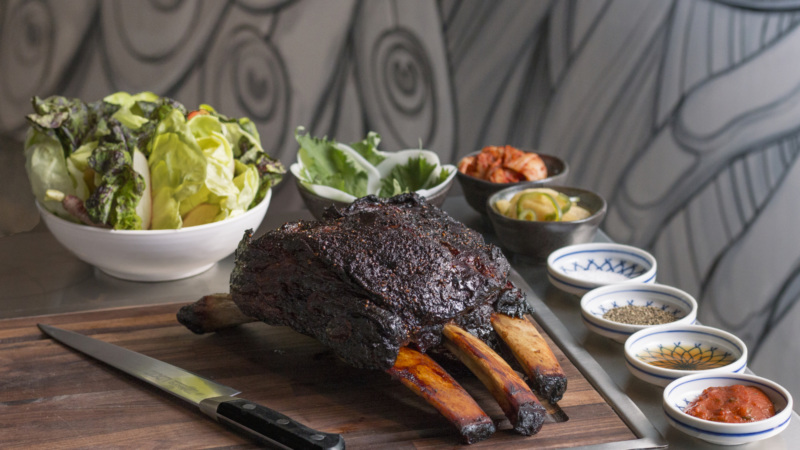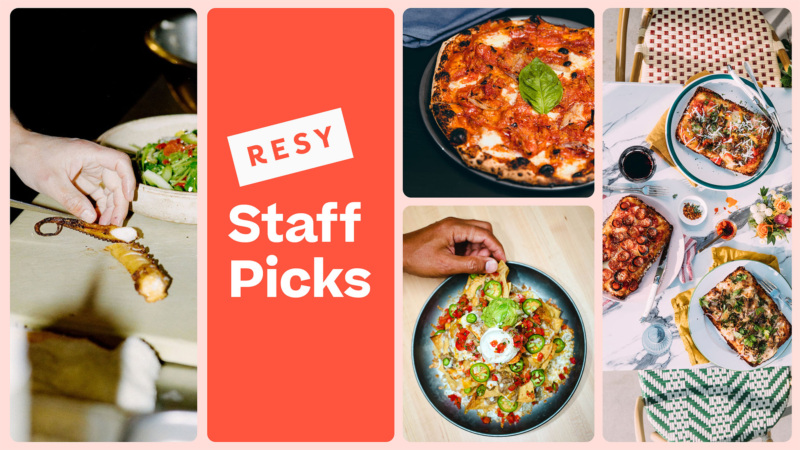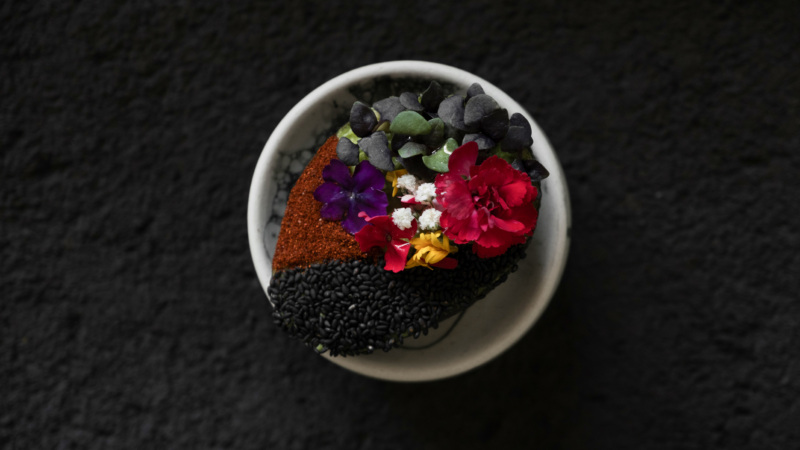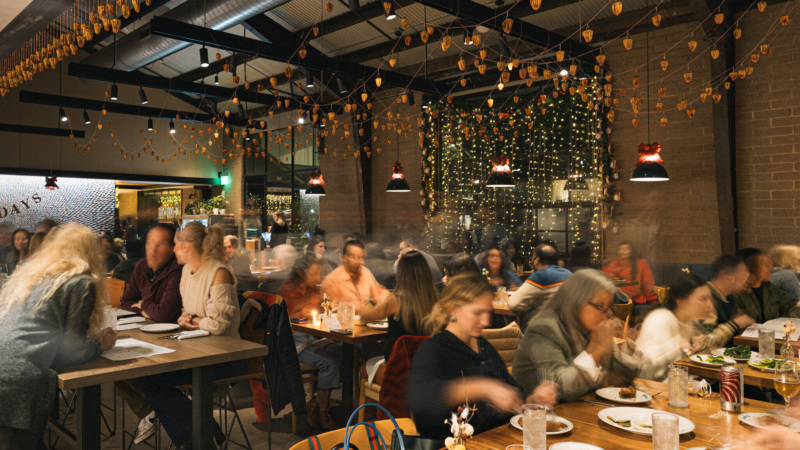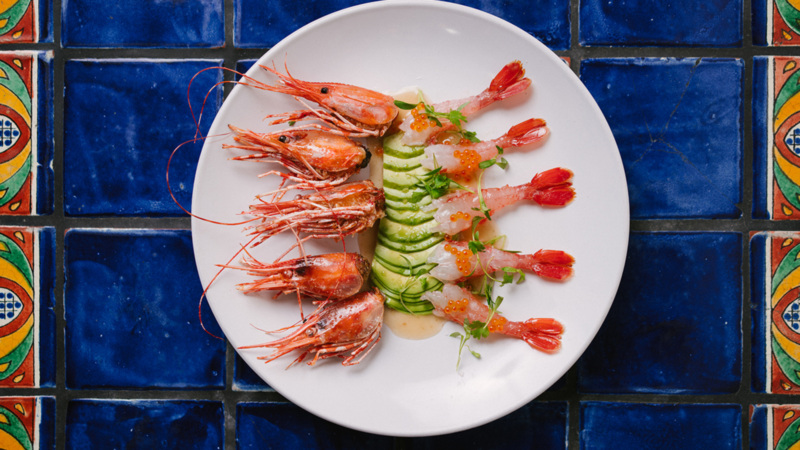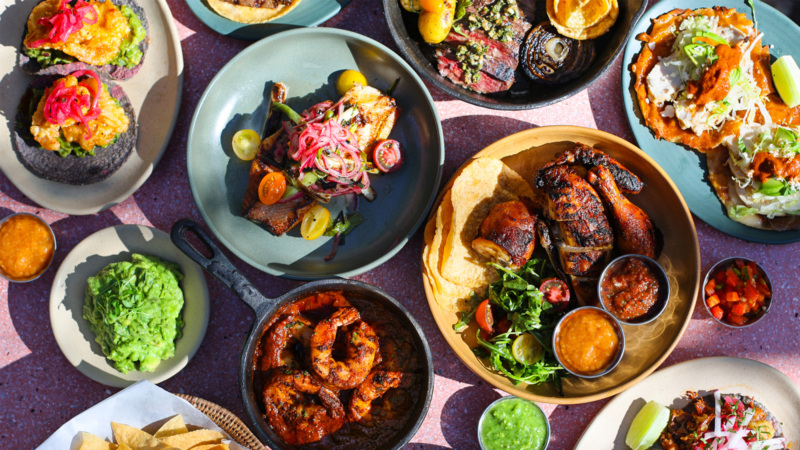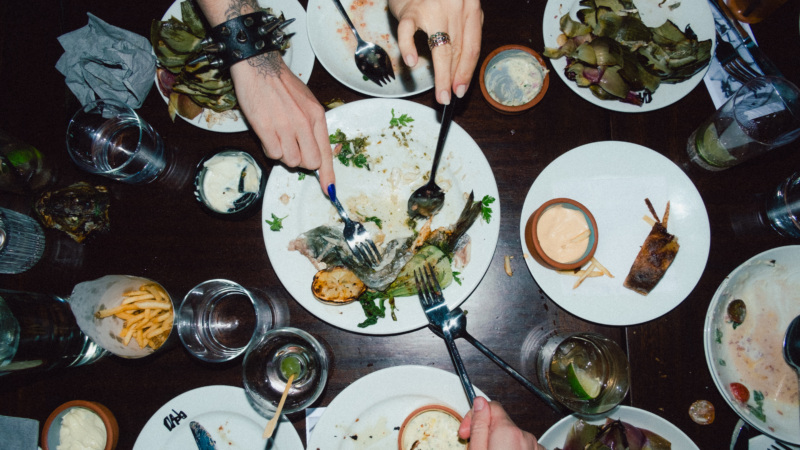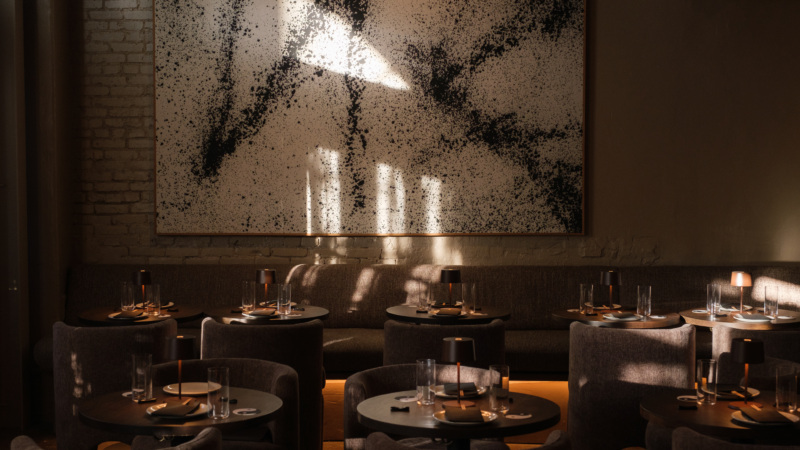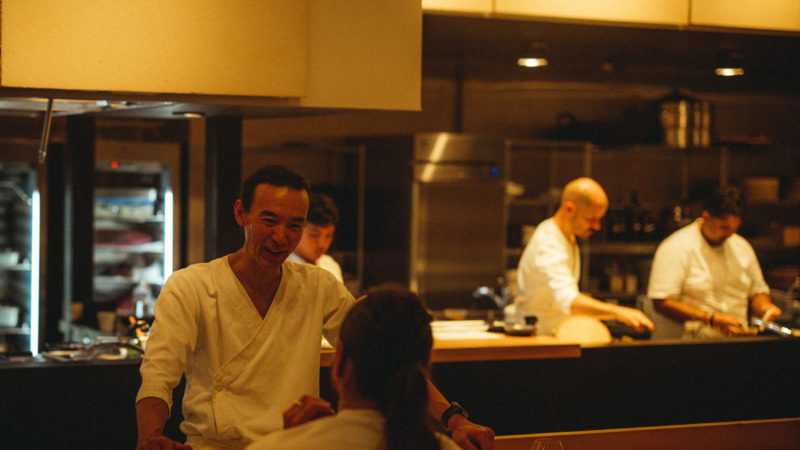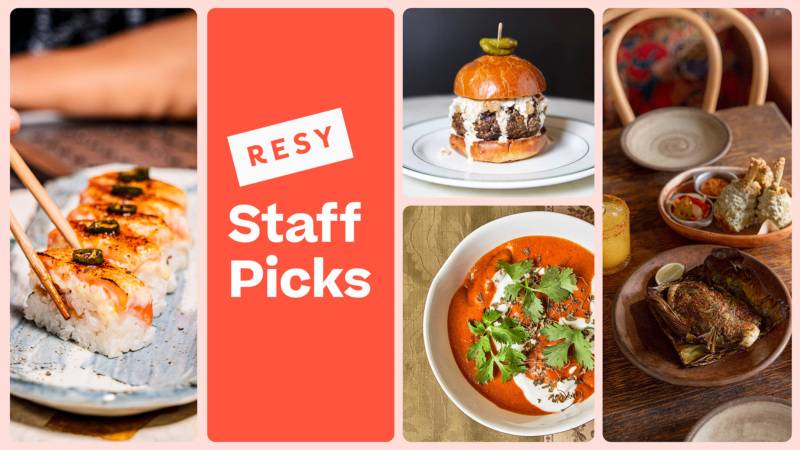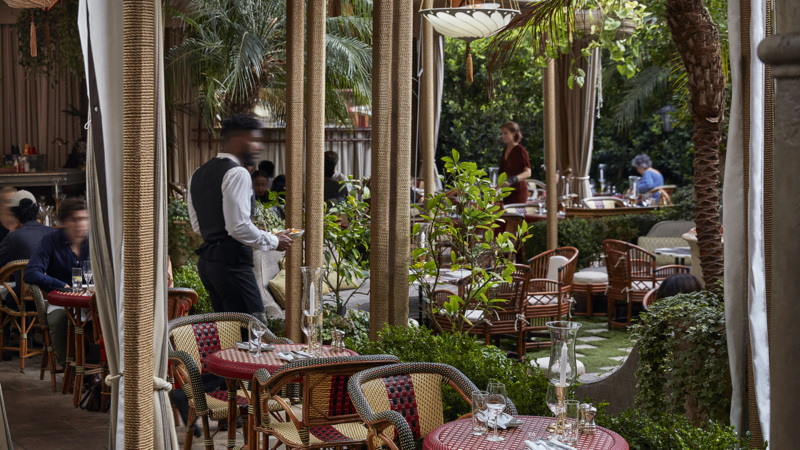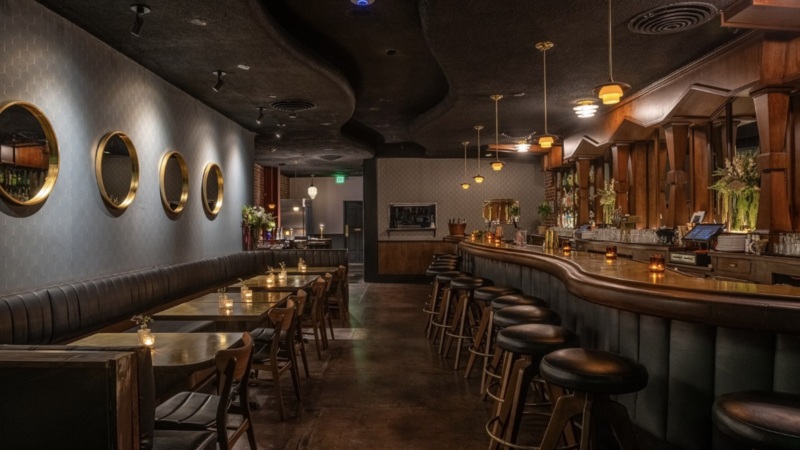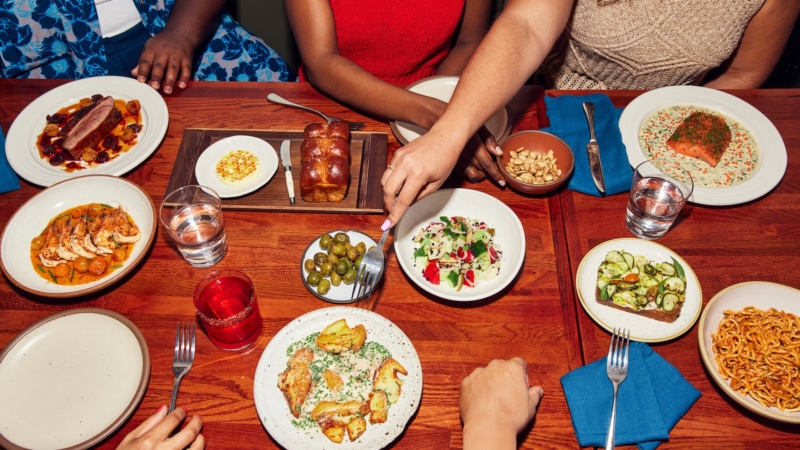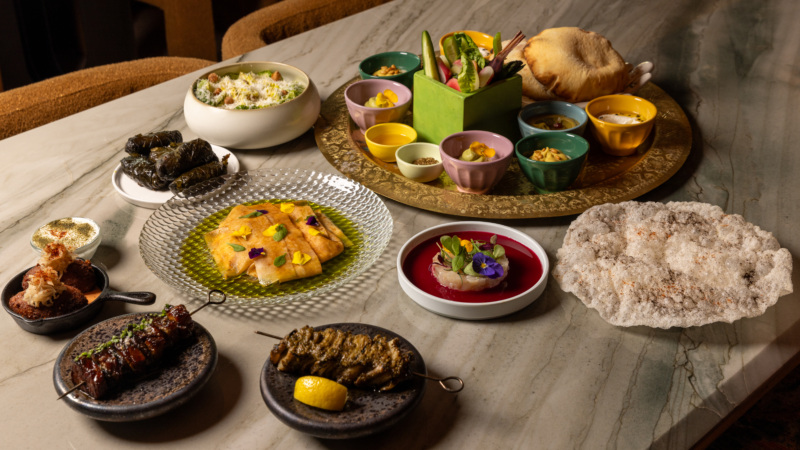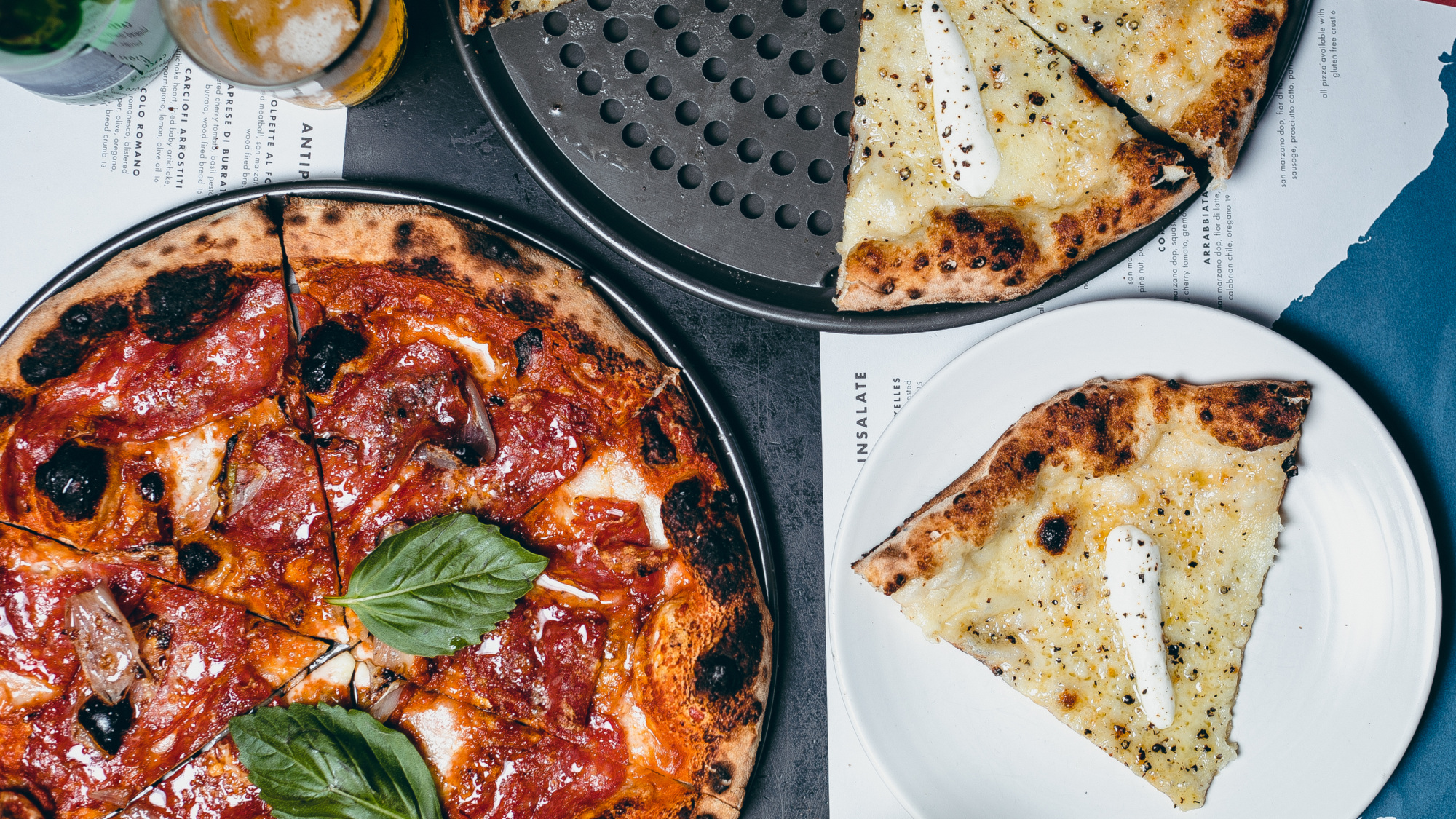
Pizzana’s Daniele Uditi Wants to Spread the Gospel of ‘Slow Dough’ Across America
Pizzana has been on an expansion tear across Los Angeles since it opened its doors in Brentwood five years ago. In fact, ever since the summer of 2017, when the late Jonathan Gold called the Naples-born pizzaiolo Daniele Uditi’s cacio e pepe pizza “a small miracle,” the pizzeria has been a runaway success.
Today, there are Pizzana locations in West Hollywood, Sherman Oaks, and Dallas, all serving up Uditi’s signature neo-Neapolitan pies, which fuse imported Italian ingredients with fresh California produce. Plus, the brand recently launched a line of frozen pizzas that can be shipped across the country.
Uditi has finally landed on the east side of L.A., with a new location in Silver Lake to sling his classic and inventively-topped pizzas. We caught up with the pizza chef to talk about how he first learned to make pies, why his style is so unique, where he factors within Los Angeles’ booming pizza scene, and what’s next for Pizzana.
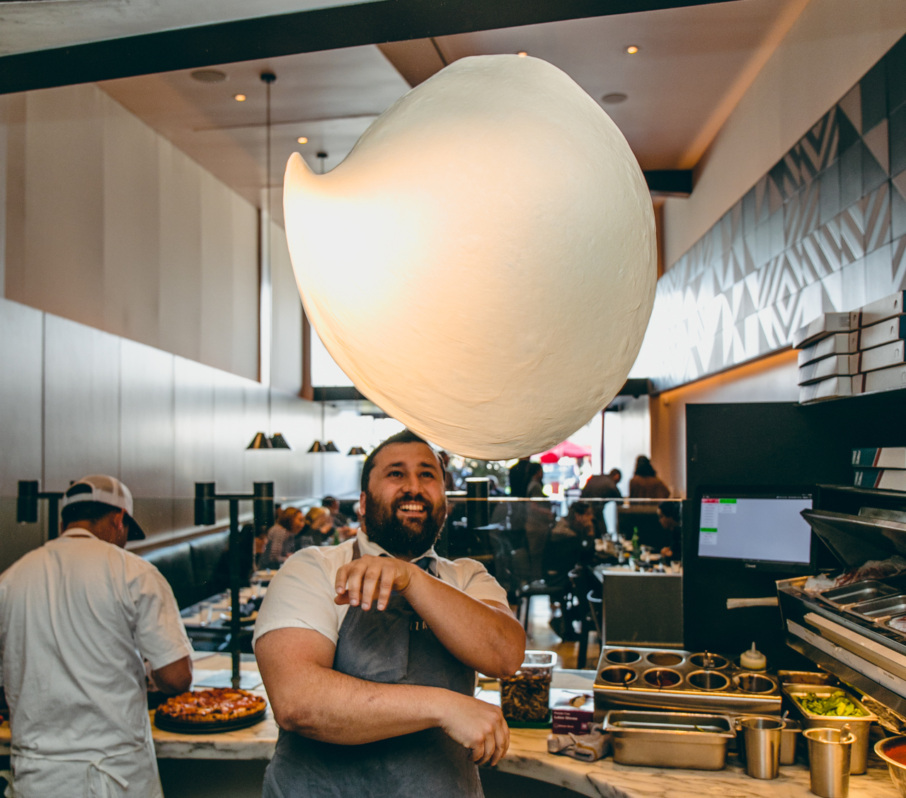
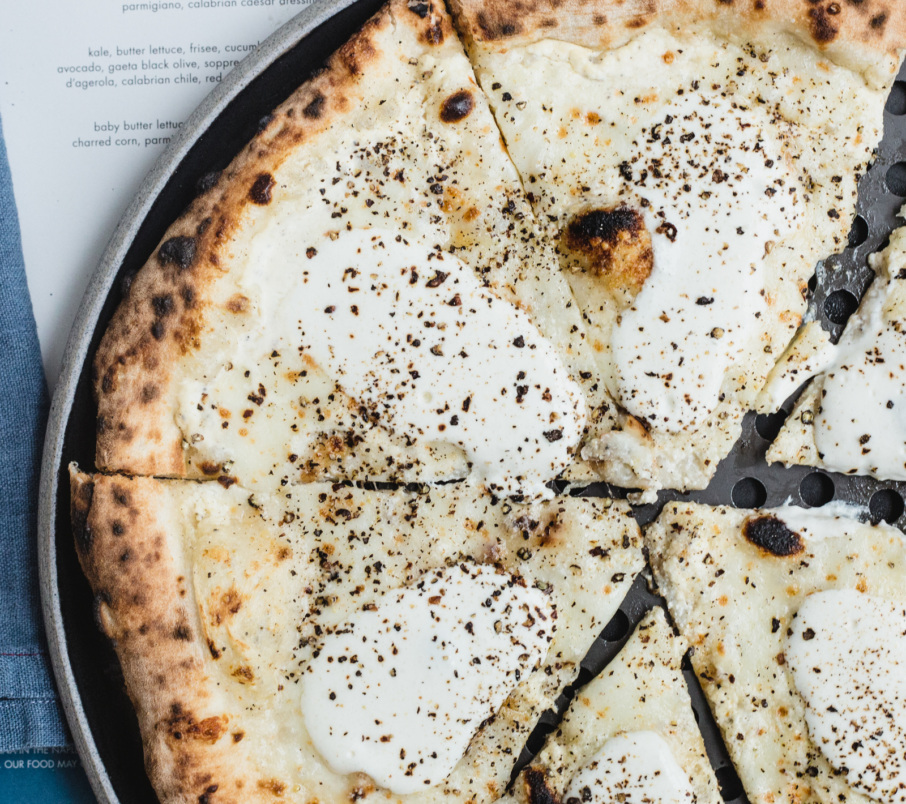
Resy: What was the first style of pizza you learned to make?
Daniele Uditi: I started to work at nine years old. My family are breadmakers, so we used to all make bread together. I’d wake up early in the morning to grab a glass of milk and I’d see my family playing with this beautiful wooden box with some sticky stuff inside. Inside was the bread. And I said, ‘I want to play with that, I want to put my hands in it.’ By the age of 10 or 11, I was starting to cook my first loaves.
On a Saturday night [in Naples] you go out with your family for a pizza, and I asked my mom, ‘Who’s that guy that’s slapping all the pizza dough?’ She said, ‘that’s the pizza chef.’ I thought, ‘oh my God, he gets paid to do that? I want to do that.’ So I started to play around with my family’s dough and do the same. A love for pizza and for cooking was in my blood. My mom was a chef. My grandpa was a pastry chef on cruise ships. Then I started to learn how to make true classic Neapolitan pizza in kitchens around Naples, but my passion was always in going back to my childhood memories.
I’d flatten the dough that I made with my family, but our oven was for breadmaking, so the temperature was lower. [The heat] wasn’t very aggressive like [it is] for Neapolitan pizzas that have to be cooked in 60 seconds. When I came here, instead of making a traditional Neapolitan pizza, I wanted to make something that was closer to my heart. I went back to making baker-style, neo-Neapolitan they call it over here, but it’s more of a baker-style pizza cooked at a lower temperature, for two to three minutes, so that the toppings marry with the crust and you have some crispiness. So that’s the pizza that I make.
When you came to L.A. and started making pizza here, how did you incorporate Californian elements into your pizza-making?
DU: It was very familiar because over here people go to the farmers’ market. I used to go to the farmers’ market [in Italy] with my mom all the time. Italy is very famous for produce, but things grow here in California that taste amazing, too. Something that I didn’t see a lot of pizza places over here doing, especially the big chains, is to marry the freshness from the market to the pizza. In Naples that’s second nature to us. Here, I often see artichokes and olives in a can. What we do is utilize the farmers’ market and announce our relationships with the farmers on the pizza.
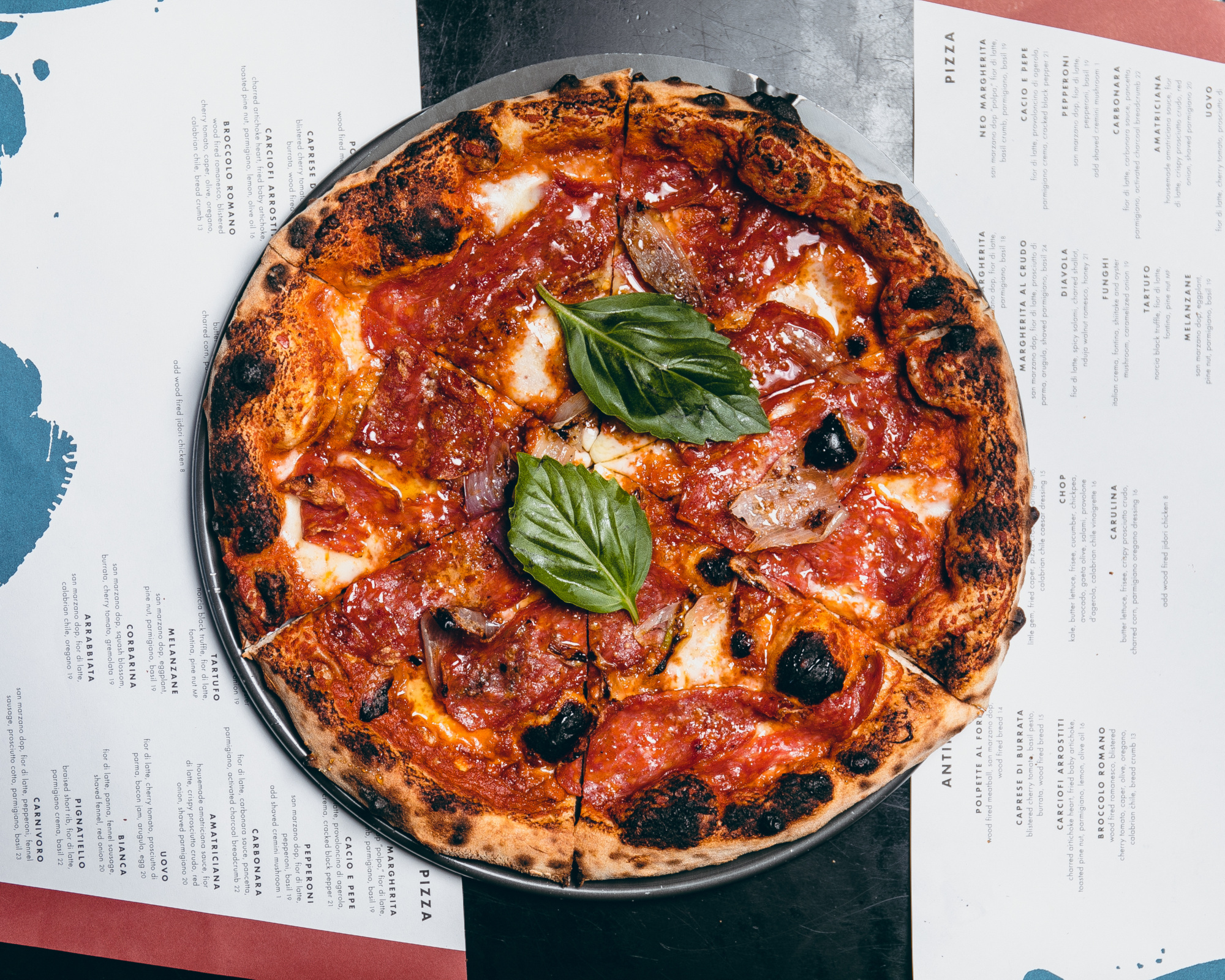
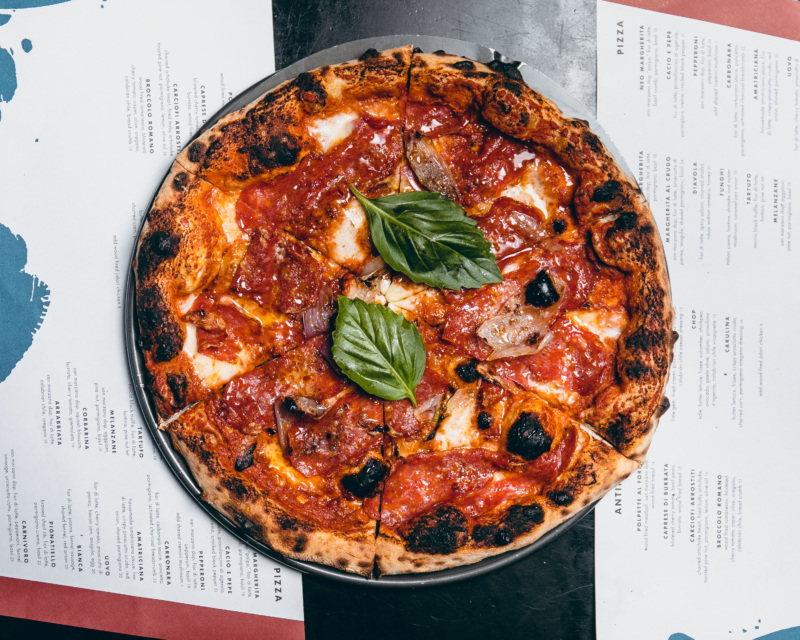
Which of your ingredients are imported from Italy, and what are you getting locally?
DU: We get all of the fresh produce from California, so lettuces, vegetables, and other produce that is available for specials. But when we talk about the core of the pizza, the flour is milled by stone, and the fior di latte gets shipped twice a week from Latteria Sorrentina in Naples, which is an amazing producer. We don’t use fresh mozzarella; we use fior di latte, which is a funkier and dried version of mozzarella cheese. It has less water content, so when you put it on a pizza it doesn’t over-wet the crust.
We have our own plot of tomatoes in the San Marzano region — a couple of friends of mine grow tomatoes just for Pizzana, and I’m lucky enough to use tomatoes that taste like my childhood. There is no citric acid, and there’s not all this stuff to preserve them. We also import Parmigiano Reggiano and Pecorino Romano. But there are some other cheeses I buy from Patty VanDyke at the farmers’ market; sometimes, she makes a makrut lime-infused cheese or very funky pecorino goat cheese… I see what’s happening and try to include the ingredients here mixed with ones from Italy.
You call your pizza dough “slow dough.” Can you elaborate on what you mean by that?
DU: Basically, it’s what you think. Slow dough means it takes a lot of time to ferment. When you make a pizza, there are a lot of elements that you need to think about. There is a proofing element — if you add a lot of yeast to a piece of dough, it’s going to proof very fast, but that doesn’t mean it’s digestible. We use no yeast. We use a criscito, which is similar to sourdough, but instead of being sour, it’s sweet because we add salt to it. The pH is more controlled, it doesn’t go sour, and it actually retains some of the sweetness of the flour.
The technique comes from my family and how we make our bread. A lot of people can’t digest sour — it gives them acid reflux — but I do it this way because I love the flavor. When I came to this country I brought a little bit of the criscito from my family, and we refresh it every day, so in each pizza at Pizzana there’s a little bit of history from my family. Now it’s 66 years old.
Do you have a name for it?
DU: I call it after my mom, Felicia, who passed away a long time ago. It’s a way to remember her, because she’s who I got my passion for cooking from. Being a pizza chef you have to make amazing dough, but you also have to understand the balance of the ingredients on top.
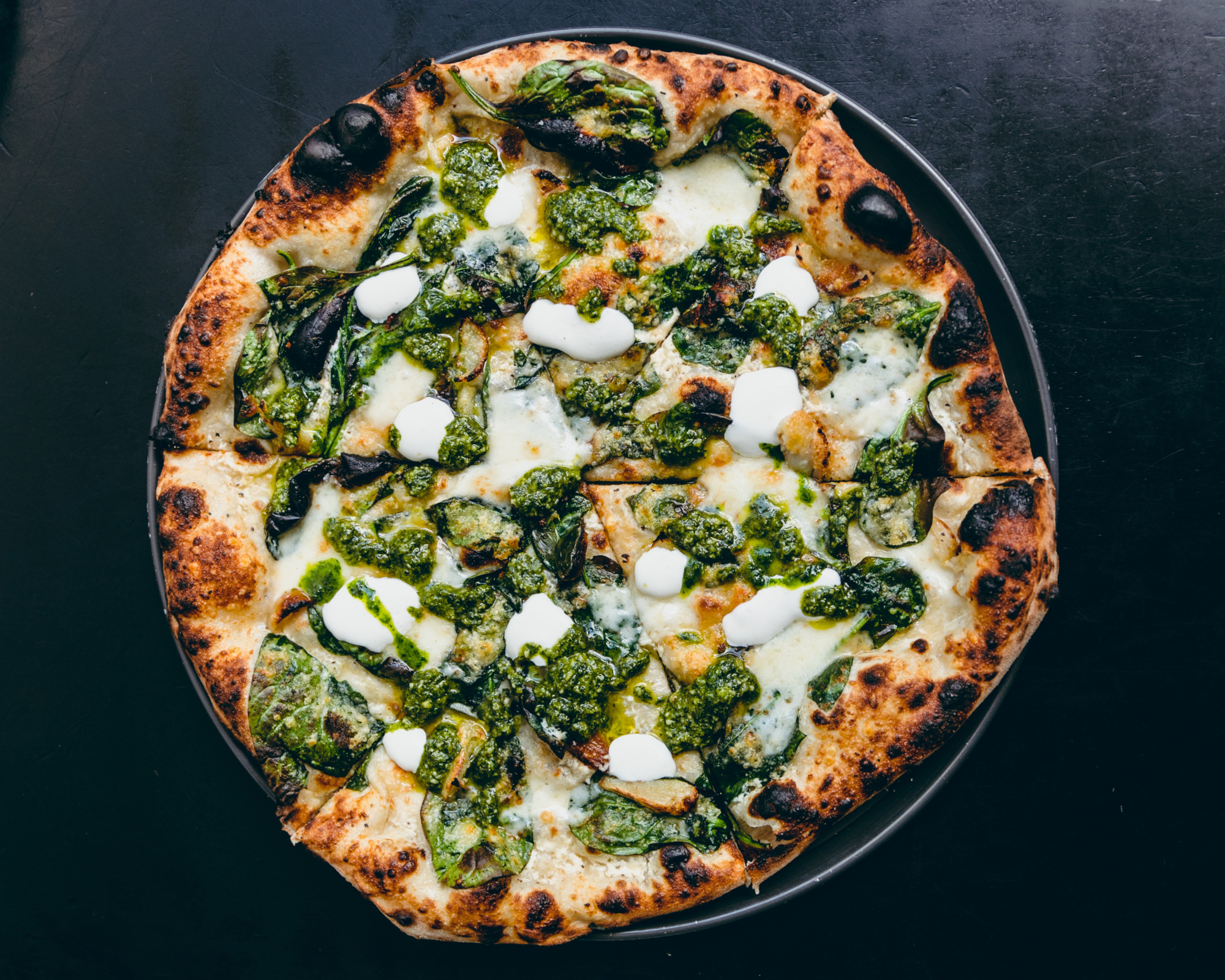

What’s the Pizzanna pie that best exemplifies your style of pizzamaking?
DU: If I had to pick a pizza that made our name, it’s thanks to Jonathan Gold. He came two weeks after we opened, it was a huge surprise, and he described our cacio e pepe pizza as “a small miracle.” We were one of the first to put pasta flavors on pizza. We recreate the same texture and lusciousness of the parmigiana cream of the cacio e pepe noodles in each slice. You’re going to have a familiar slurpy flavor on each slice.
Is there anything unique to your new Silver Lake location?
DU: This location has its own special pizza, which is going to be called Puttanesca. It’s another take on a pasta dish, but instead of using regular tomatoes, we take tomatoes from the farmers’ market, we marinate them, and then we use garlic, olives, capers from Italy, and anchovies from Cetara. It’s very, very good. In other parts of Los Angeles people are afraid of anchovies but over here people are more [adventurous]. We can push a little bit on flavors and umami. Not a lot of people like anchovies, but when we tried it over here, people were like, ‘Oh my god, we love these anchovies.’ The sea town I come from in Naples happens to have some of the best anchovies you’ll ever taste in your life.
It’s a great time for pizza in Los Angeles. There are so many more excellent pizzerias now than there were when you opened Pizzana in 2017. How do you feel about that?
DU: When something works, and you see other people doing it, that’s great, because that means we were inspirational. I’m proud to be one of the first people in Los Angeles to have contributed to this pizza renaissance.
It’s nice, too, that there’s a lot of diversity in Los Angeles pizza, since the city isn’t beholden to a specific style like in New York.
DU: We would be foolish as chefs to not utilize what’s going on over here in Los Angeles. The terroir is amazing, and the farmers are amazing. It makes all of the difference.
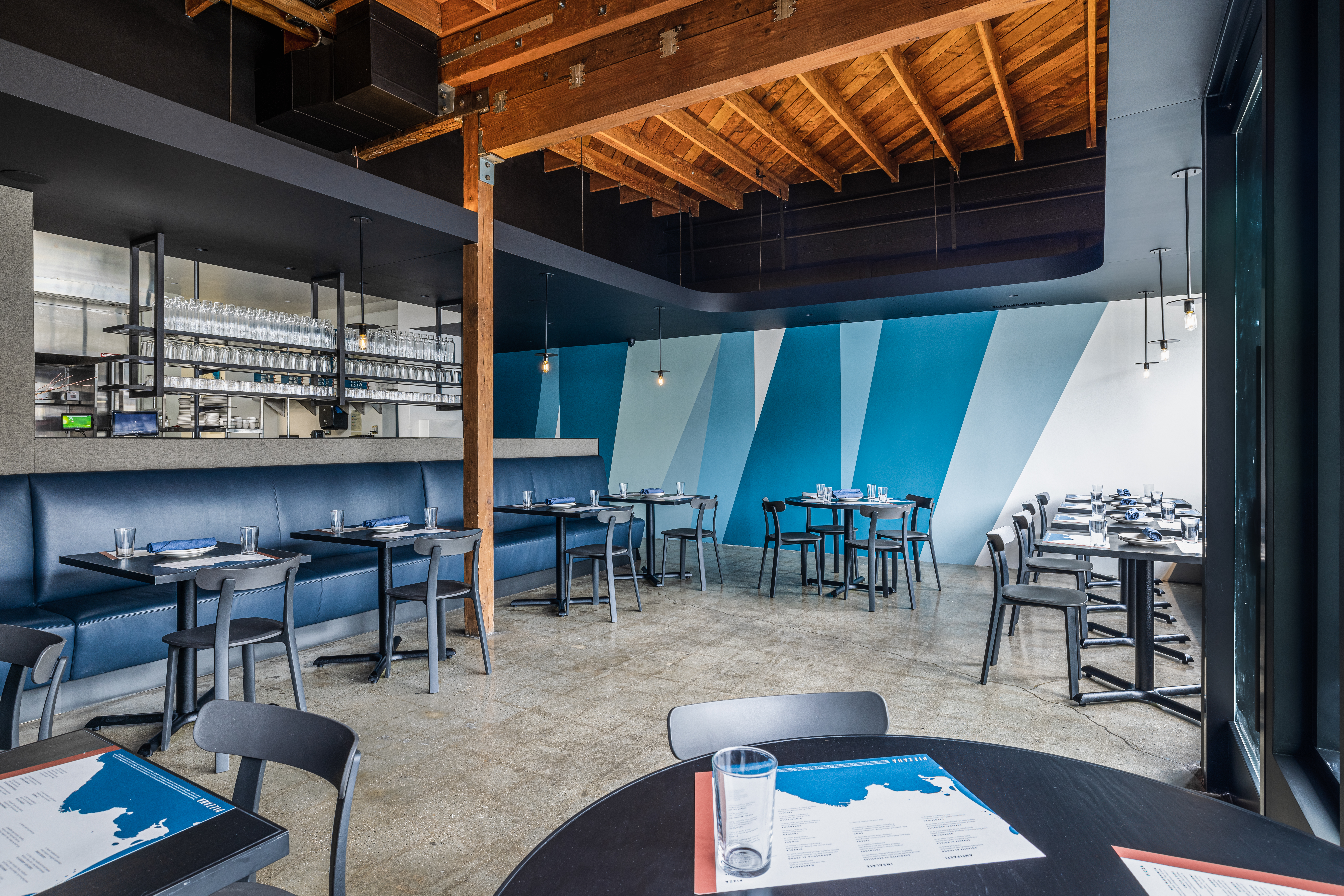
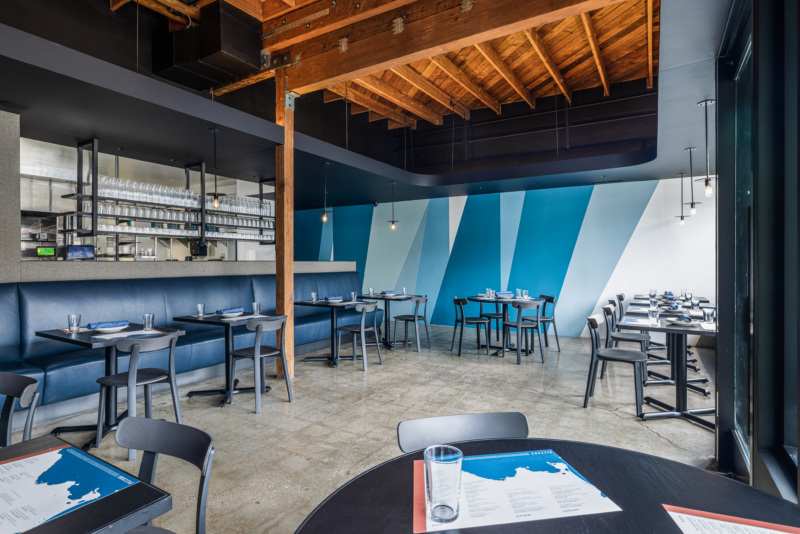
Do you think Angelenos have a greater interest in pizza now than compared to a few years ago?
DU: Before I opened up Pizzanna, especially in the neighborhood I was opening in [Brentwood], they told me I was never going to sell pizza over there, it’s a carb-less city. I don’t find that to be true at all because if the carbs are good, people will eat them. There’s a lot of interest in not just pizza but also bagels and sandwiches, too.
It’s all related to how well you want to do your job. If you care about people, you try to take the best ingredients that are actually healthy for you. A lot of people have this misconception that you can’t eat gluten because it’s bad for you, but if it’s properly fermented and made with high-quality, organic flour, it’s actually good for you. In the right amount of quantity, that is, not like me — I eat pizza every two hours, and I’m inflated like a balloon (laughs).
Silver Lake is your fourth location in L.A., and you also have a Pizzana in Dallas and a frozen pizza line. What’s next?
DU: Hopefully, we expand more within Los Angeles but also across the United States. I want to keep proving to myself that the pizza we make is some of the best in the U.S., and I want to keep making people happy.
Are there any cities you have your eyes set on?
DU: I know for sure we’re going back to Texas, but I don’t know the city yet.
What do you love most about making pizza?
DU: What I love the most about making pizza is the memories. When I’m at the stretching table teaching other people how to make the dough, or I’m working a shift at night, it’s that moment that I’m there with the dough and touching it that brings me back to that little kid who is nine years old and sticks his hands in the wooden bin with his family. That’s the closest thing I get to being with my family, so I get emotional. Through making the dough, I feel closer to them.
Emily Wilson is a Los Angeles-based food writer from New York. She has contributed to Bon Appétit, Eater, TASTE, The Los Angeles Times, Punch, Atlas Obscura, and more. Follow her on Twitter and Instagram. Follow Resy, too.





